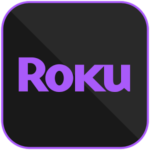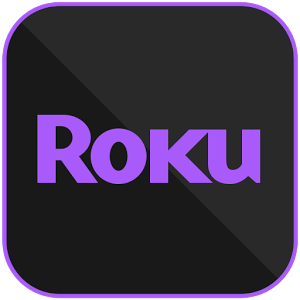Category: Internet Stocks
Roku
Taking a Switzerland-style Approach to Internet Television
 Roku (NASDAQ: ROKU), a provider of television streaming devices, and advertising services, becomes the most recent addition to our Battle Road IPO Review Hardware coverage. Founded in 2002, and based in Los Gatos California, the company is best known for its Roku family of internet streaming devices, having been a pioneer in the field. The company is led by founder and CEO Anthony Wood. Steve Louden, CFO, joined Roku in June of 2015, after having held various finance roles at Expedia, between 2009 and 2015, including VP of corporate finance, and treasurer. Consensus estimates call for revenue of $485 million and a Loss Per Share of $0.64 in the current year, while next year, the company is expected to reach $625 million in revenue, and record a loss of $0.50.
Roku (NASDAQ: ROKU), a provider of television streaming devices, and advertising services, becomes the most recent addition to our Battle Road IPO Review Hardware coverage. Founded in 2002, and based in Los Gatos California, the company is best known for its Roku family of internet streaming devices, having been a pioneer in the field. The company is led by founder and CEO Anthony Wood. Steve Louden, CFO, joined Roku in June of 2015, after having held various finance roles at Expedia, between 2009 and 2015, including VP of corporate finance, and treasurer. Consensus estimates call for revenue of $485 million and a Loss Per Share of $0.64 in the current year, while next year, the company is expected to reach $625 million in revenue, and record a loss of $0.50.
Roku made its debut on the NASDAQ on September 28, in a 15.7 million Class A share IPO, priced at $14 per share. The IPO closed on October 1st, with the underwriters having exercised the option to purchase an additional 2.4 million shares. In all, the company sold 10.4 million shares, while selling shareholders sold 7.7 million shares. Importantly, the company’s Class B shares contain 10x the voting power of the Class B shares sold to the public, and Class B shareholders retain 98 percent of the voting rights post offering. Combined, there are now roughly 97 million shares outstanding. At a recent price of $38, Roku has a market cap of roughly $3.8 billion. The IPO was led by Morgan Stanley, Citigroup Capital Markets, Allen & Company, RBC Capital Markets, Needham & Company, Oppenheimer, and William Blair. Roku has a 180 day lock-up period that expires on March 27, 2018.
Best known for its family of internet streaming devices, Roku, in its current incarnation, was essentially a spin-out from Netflix (NASDAQ: NFLX), which had conducted work to develop and manufacture its own television streaming device about a decade ago. Upon further reflection, however, Netflix concluded that selling its own streaming device would undercut its efforts to persuade other manufacturers of such devices to support Netflix’s television and movie streaming content. A new company was created, under the name Roku, and each party was free to pursue its rivals to support its devices and content separately.
With Anthony Wood at the helm, therefore, grew up alongside Netflix, as one of the first commercially successful streaming device manufacturers in the early days of internet TV. Though Roku continues to garner the largest installed base of internet streaming devices, its success has since drawn numerous competitors into the market, including Apple, Amazon.com, and Google, all of which offer internet television streaming devices.
Today, Roku offers five different devices, priced between $29.99 and $99.99 at retail. For all of 2016, the company’s devices accounted for roughly 74 percent of revenue, with advertising and subscription revenue sharing accounting for the remainder. In 2016, device revenue grew by nine percent over the prior year. Gross margin from devices was roughly 15 percent, attesting to the price competitiveness of the category. In the first half of 2017, device revenue contracted by two percent versus the prior year, while gross margin fell from 17 percent to just 12 percent.
The more exciting part of Roku’s business is what it refers to as “platform,” which includes advertising and subscription revenue sharing. Using its position as a Switzerland-style provider of streaming services, unencumbered by ties to any of the cable network or internet streaming service providers, Roku has developed relationships with advertisers that are eager to take part in the trend toward internet television, and provide ads to internet television watchers. Through its opt in system, Roku is able to record the preferences of viewers, presumably capturing important demographic data that enables advertisers to reach their intended audience more efficiently. Roku claims 15 million such subscribers from among the total number of devices sold.
Today, advertising accounts for 67 percent of the company’s platform revenue, which totaled $82 million in the first half of 2017, up 91 percent from the prior year. Platform revenue grew from 27 percent of sales in the first half of 2016 to 41 percent in the first half of 2017. Platform gross margin was 76 percent in the first half of 2017, up from 71 percent in the first half of 2016. As a result of the shift in revenue mix, the company was able to achieve 23 percent revenue growth in the first half of 2017, along with a gross margin of 38 percent, considerably higher than the 31 percent achieved in the prior year.
While the above-mentioned trends narrowed the company’s operating losses, Roku still has much work ahead if it intends to run a profitable business. The company’s operating loss was $43 million in 2016. Its operating loss was $21 million in the first half of 2017, an improvement over the $32 million operating loss of 1H 2016. Despite the favorable trends in revenue and gross margin, Roku ramped up its R&D spending by 25 percent, reaching $48 million in the first half of the year, or 24 percent of total revenue, an exorbitant sum, which calls into question its desire or plan to improve profitability.
Over the last few years, the competitive landscape has intensified, with Apple, Amazon.com, and Google having introduced a variety of new devices into the market, as the battle for the living room spawned by the rise of internet television viewing continues. Overall, we are intrigued by Roku’s approach, which provides benefits for viewers, advertisers, and content creators. Nevertheless, we would prefer to see solid evidence of reaching and sustaining profitability, particularly given its current valuation, which has rallied dramatically in the last week, after reporting results for its first quarter as a public company.
Post IPO, Roku has a very good balance sheet with an estimated net cash position of $245 million post-offering, inclusive of $23 million in long term debt. Nonetheless, given the expectation for continued losses this year and next, the stock ranks near the very bottom of our Hardware sector coverage.
Snap (NYSE: SNAP) –an IPO Snapshot
 Snap, a social media app for sharing pictures, video and text messages, becomes the most recent addition to our Battle Road IPO Review Internet coverage. Founded in 2011 by Stanford roommates Evan Spiegel and Robert Murphy, president, and Chief Technology officer, respectively, the company is based in Venice, California. According to current Consensus estimates Snap is expected to post revenue of $1 billion this year, (up from $600 million in 2016) along with a loss per share of $0.58. In 2018, revenue is expected to nearly double to $1.9 billion, and its loss per share is expected to narrow to $0.34. Like Google, Facebook, and Twitter, Snap monetizes content on its website through advertising.
Snap, a social media app for sharing pictures, video and text messages, becomes the most recent addition to our Battle Road IPO Review Internet coverage. Founded in 2011 by Stanford roommates Evan Spiegel and Robert Murphy, president, and Chief Technology officer, respectively, the company is based in Venice, California. According to current Consensus estimates Snap is expected to post revenue of $1 billion this year, (up from $600 million in 2016) along with a loss per share of $0.58. In 2018, revenue is expected to nearly double to $1.9 billion, and its loss per share is expected to narrow to $0.34. Like Google, Facebook, and Twitter, Snap monetizes content on its website through advertising.
Snap launched its 200 million Class A share IPO on the NYSE on Thursday, March 9th at an opening price of $17, with 145 million shares sold by the company, and 55 million shares old by existing shareholders. The Class A shares have no voting rights. The transaction netted the company roughly $2.3 billion. Snap’s capital structure also features Class B shares, which are allocated one vote, and convertible into one share of Class A stock. The company’s Class C shares have 10 votes and are convertible into one share of Class B stock.
Following the offering, nearly 90 percent of the voting rights reside with founders Spiegel and Murphy. Early investors in Snap include Benchmark Capital and Lightspeed Ventures. The transaction was led by a relatively small number of seven underwriters, which included Morgan Stanley, Goldman, Sachs & Company, J.P. Morgan, Deutsche Bank Securities, Barclays, Credit Suisse, and Allen & Company. By way of contrast, Facebook utilized 31 underwriters for its IPO. At a recent share price of $22, Snap’s post- IPO market cap is roughly $31 billion, taking into account the company’s three tiers of stock, along with restricted stock units, which in aggregate total roughly 1.4 billion shares.
Originally founded as a picture-sharing website called Picaboo, the company later changed its name to Snapchat. By the end of 2012, Snap had one million daily active users. In contrast to other picture and video sharing websites, such as Twitter and Facebook, Snap pioneered the notion of delete by default, that is, pictures posted and shared dissolve within 10 seconds. Thus, users can share images and videos more spontaneously, and for some, not have to worry about the repercussions of a permanent or embarrassing posting. The spontaneous nature of Snap has resonated with millions of 13-24 olds that are its target demographic. The company has since added text messaging and story-telling through the creation of personalized pictures and videos that can tell a story as it unfolds throughout the day.
Another company milestone occurred in 2013, when Facebook, according to multiple press accounts that we have seen, offered to buy Snap for $3 billion. The prior year, Facebook acquired Instagram for $1 billion. Since then, Facebook has dramatically improved Instagram, and also acquired WhatsApp, a chat application company, for which it paid $19 billion.
In 2014, less than three years ago, Snap announced that it had 50 million daily active users, and added chat and live stories to its capabilities. Paid advertisements were implemented by the end of the year. By the end of 2015, the company claimed over 100 million DAUs. By its own accounting, Snap now counts over 166 DAUs, which it calculates as the average number of DAUs for the entire quarter for which it reports. This contrasts with Facebook, which reports both the number of DAUs and Monthly Active Users (MAUs) within a given quarter. In the most recent quarter, for example, Facebook reported DAUs of 1.3 billion, and MAUs of 1.9 billion. Twitter, by contrast, only reports the number of MAUs, which totaled 328 million at the end of the first quarter. Twitter has, for several years, refused to divulge the number of DAUs, a figure that it had reported until shortly after its IPO.
Another indication of the frequency of use is the number of times that a daily active user activates Snap. By Snap’s measure, users younger than 25 visit the site over 20 times each day and spend over 30 minutes each day on the site, a metric which it no doubt hopes will lure advertisers who it hopes will pay a premium fee based on the ability to measure advertising returns on investment with a frequently engaged user base.
One of the many challenges facing Snap is a relatively immature business model. For example, while we were not surprised to see that the company, whose revenue was $405 million in 2016 operated at a substantial operating loss of $520 million. We were surprised to see that the company had a negative gross margin, which is highly unusual for a company of its size. We think this is largely explainable by the considerable bandwidth costs attendant to operating a website with frequent picture and video sharing, along with a heretofore limited revenue base.
In an effort to improve its gross margin, Snap recently signed a multi-year deal with Google, for use of its cloud-based data centers, which guarantees the latter $400 million each year over the next five years. It also enables Snap to, at least in theory, improve its gross margin as it spreads a growing advertising revenue base over a more predictable somewhat fixed cost of goods sold. Snap also signed a smaller deal with Amazon for use of its web services. Snap’s AWS volume purchase commitment increases meaningfully over the next several years, such that when its contract comes up for renewal with Google, it will have a decent bargaining position to obtain the most favorable terms. Snap may also invest in data center capacity of its own to prevent being beholden to either Amazon or Google.
Like Twitter and Facebook before it, Snap has an excellent post-IPO balance sheet, with about $3.2 billion in cash, without any debt. At the end of the first quarter, the company’s DSOs totaled 92 days, an indication that it likely conducts most of its business through third party ad agencies and networks, rather than directly with end customers. To learn more about how Snap’s post-IPO valuation compares with its internet peers of the last eight years, contact Battle Road Research at info@battleroad.com.

